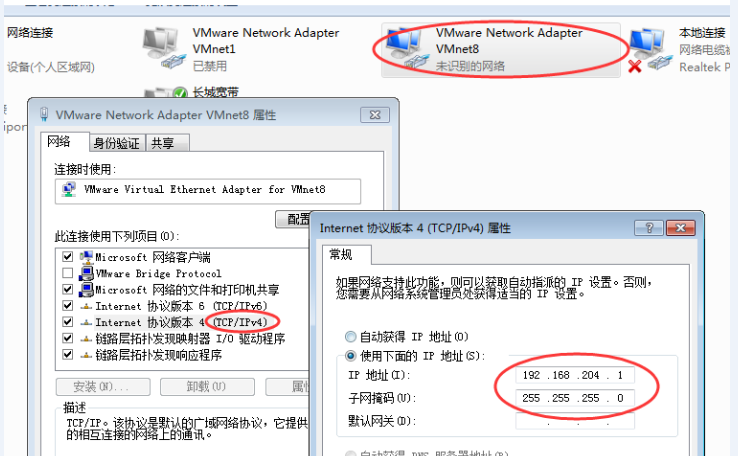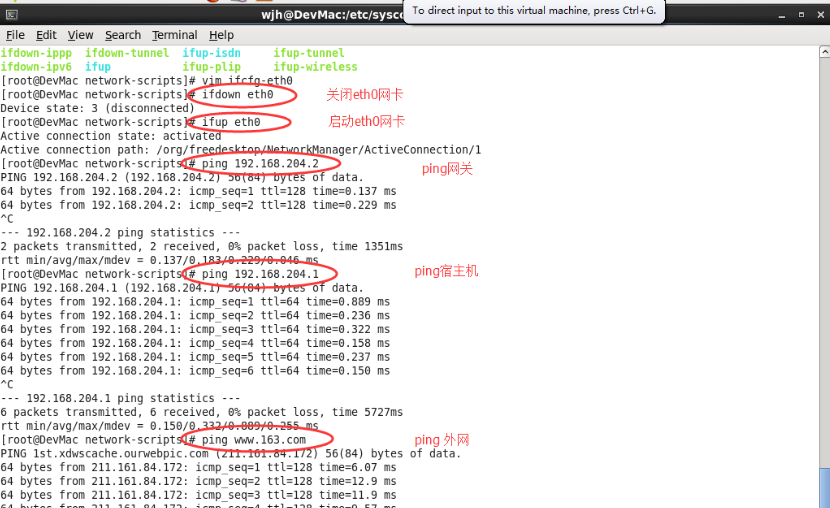Source: Author: Wildfire
The original address: https://www.cnblogs.com/hell8088/p/vmware.html
There are many online network theory to explain the VMWare article, I will not repeat here, interested friends can search
Under this chapter, we use the VM introduces two most common network model, VMNet 0 and VMNet 8
This article are original, For reprint please indicate, thank you
When we installed VMware Workstation, on the host (physical computer) will be more than two network cards, VMNet1, VMNet8, in the virtual machine settings in the configuration will be more of a VMNet0.
As shown below:


Next we illustrate below:
- VMNet1
Using a host-only link mode, that is, the virtual machine can only constitute internal communication with the host, the external network can not be accessed.
- VMNet0
mode:
Use bridge mode, after installing VM, creating a virtual machine in the VM default is the mode.
Scenes:
If you just need a virtual machine and the host can communicate, and can access the Internet, this mode can be.
description:
No adjustment network, physical network "Routing" after installing a virtual machine system comprising a DHCP server will automatically identify the virtual machine, and assign an IP address;
If no routing can be manually own distribution system, the principle is the same network segment and the host at the same point and the gateway can communicate.
- VMNet8
mode:
NAT network mode
Scenes:
Mounting the host multiple virtual machines, consisting of a small local area network and the host, can communicate with each other, the virtual machine can access the Internet between the host, a virtual machine, e.g. hadoop cluster structures, distributed services
Procedure:
step1
View VMNet IP network segment 8, see Step1 second map
Segment 192.168.204.0
Subnet mask of 255.255.255.0
Gateway 192.168.204.2
FIG third network card address VMNet 8 on the host
IP address 192.168.204.1



Step2
Remember that the above information network, start the virtual machine configuration, first adjust network mode virtual machines in NAT mode


Step3
After you configure the virtual machine, I'm using Cent OS 6.4 system (Linux), use the configuration file to configure the network, the following two maps are static IP and gateway distribution method. (Windows configure their own network)
If you do not lock the static IP (such as IP hadoop not lock a lot of trouble), then skip Step3.
Because NAT mode, VM Net8 virtual switch carried by the virtual DHCP server will automatically assign a network address, or if you need to view the settings can be set at the time of Step1 view network information.


Step4
After configuring the network, detect network conditions under virtual machine

This, our virtual network environment has configured.
Next we briefly under VM Net 8 principles, after installing VMWare, will host VM Net8 network card installed, while a virtual virtual routing used by a VM Net 8 (including virtual switches and DHCP server)
Hosts and virtual machines are actually virtual routing communications via a virtual route by the virtual machine host so that the other can also access the Internet
As shown below:

Note:
1. If you really do use a virtual machine server, set up systems VM Server, then if the use of VM Net0, directly connected to the physical network, and configure a static IP locked virtual machine server's IP address
2. VM Net 8 structures for multiple virtual machines on the machine or the server, using a local area network component.
3. Set VMNet 8, virtual machines and hosts, as well as other virtual machines outside the network can communicate with each other, but the host can not ping the gateway, no further studies in VM communication theory, this has been fully meet.